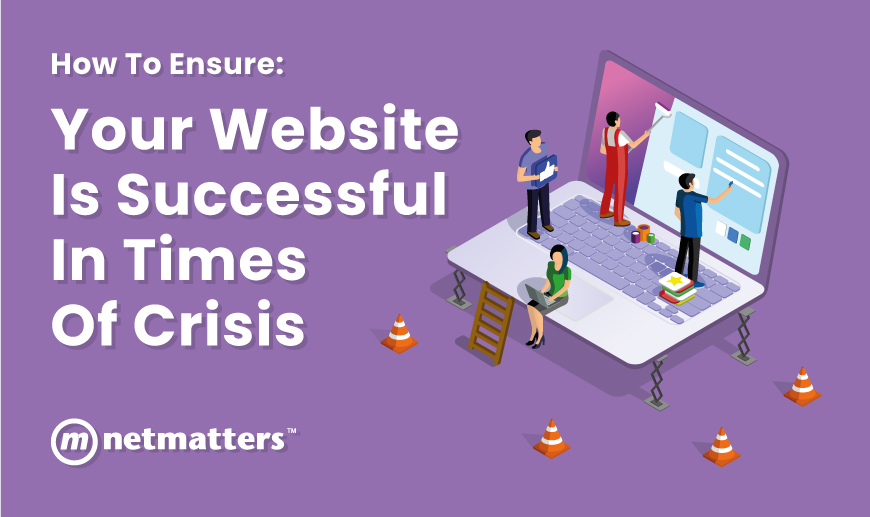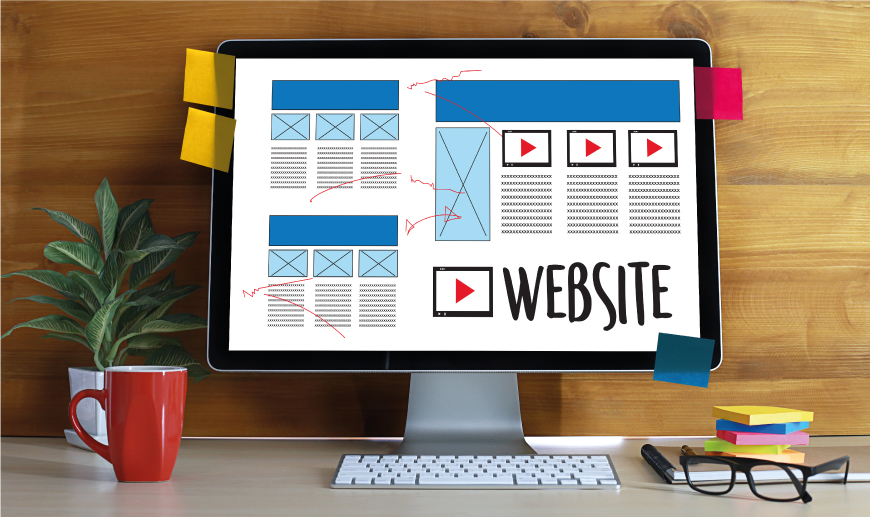- Bespoke Software
- IT Support
- Digital Marketing
-
Telecoms
Services
- Our Telecoms Services
- Business Mobile
- Hosted VoIP Provider
- Business VoIP Systems
- Business Broadband
- Leased Lines Provider
- 3CX Systems
-
Web
Design
- Our Web Design Services
- Bespoke Website Design
- eCommerce Website Design
- Pay Monthly Websites
- Branding & Design
- Mobile App Development
- Web Hosting
- Cyber Security
-
Developer
Course
- Our Developer Course Services
- Train For A Career In Tech
- Skills Bootcamp
- Scion Scheme Frequently Asked Questions
- Scion Collaborators
How To Ensure Your Website Is Successful In Times Of Crisis

Posted by Netmatters

All anyone has talked about for the last 3 months has been the Coronavirus pandemic, and rightly so. It has taken over everyone’s lives in both a professional and personal capacity.
It has forced us to rethink how we do things, not least how we operate as a business to retain customers and be able to climb the mountain in front of us.
Despite us now progressing through the peak of the virus, we still have some way to go and it is important that businesses maintain the momentum to keep things moving forward.
Whilst there has been a lot of been doom and gloom, there are some unexpected benefits to this entire situation.
One area that we have seen these unexpected wins is in how businesses are presenting themselves online.
It has been particularly eye-opening to see the innovative ways that businesses have been using both their own websites and other online channels to get their products in front of the right audiences. Many businesses have really come to understand the impact that their website can, and should, have. Businesses that have previously considered their web presence as low priority have had to re-evaluate it’s value in order to keep their business alive.
Over the years, we have been lucky enough to work with companies in a wide range of industries. This has helped us identify what makes for a successful website, and importantly how to get it in front of the right people. Given the circumstances, and how effective we have seen websites become, especially for e-commerce, we wanted to share some points to consider for your own website and your SEO activity.
Seven steps to website success:
1) Simplicity:
Whilst getting lost in a fancy design can seem exciting, overall you must consider how your design is going to affect the experience for the end user.
Design is important, and we believe it key to follow brand guidelines, so you shouldn’t ignore them for the sake of a simpler site, but consider how many “design aspects” you really need when creating it.
It is also important to maintain a simple conversion funnel – many calls to action may confuse the customer and therefore deter them from getting in touch or completing a purpose. Knowing what you want your visitors to do, and helping them to do it will allow you to keep your customer journey streamlined and slick.
Keeping it simple makes it easier for customers to find what they need with minimal effort, which will in turn, encourage more people to convert because it’s so easy to do so.
2) Functionality:
Similar to simplicity, it is important that the relevant functionality works correctly, as customer would expect.
For example, if you take bookings through your site, how much information is required and what is the result? If a customer needs to go back and forth between stages, is this achievable? Are they going to need to keep having re-enter their information, causing them to dip out?
Similarly, how effective is your search function? Are the results appropriate for the search, regardless of how obscure that may be?
When designing and building certain functionalities, the key is to test, test, and test. Ensure it does not result in error codes or broken links.
It is important to think about how the functionality will be used and ensure it works in a way that will deliver your customers what they want; otherwise, you could be losing valuable leads.
3) Transactions:
Especially in recent months, the surge in e-commerce sites has been impressive and required. With premises closed for the imminent future, how else are you going to sell your products? It has meant that companies have implemented payment functions on their sites to create an online store that keeps them afloat, a great step in digital adoption.
Payment functionalities and how transactions are taken can often come with associated hurdles. One of the reasons that some businesses have been slow to adopt and eCommerce approach is concern around needing to take payments. The need to protect your clients data and ensure the transaction is secure can lead to headaches if not completed correctly.
There are many great payment gateways that can be used across a multitude of sites, depending on the platform you are using, but they key thing to remember is that it needs to work completely with your website.
Long payment processes deter customers away so consider the amount of information you need to collect and chose a payment gateway that works with your site to deliver a simple and secure transaction for your customer.
4) Content:
Content is key to the success of your website overall.
Not only will this content inform your customers of all the details of your products and services but from a Search Engine perspective, this is how you begin to earn your rankings through Google search.
The more relevant content on your website, the better, as it allows you to rank for a multitude of relevant keywords. This can be through general product pages, blog articles or news stories.
In an ideal world, Google is looking for between 400-800 words per page. These need to cover key terms that you are looking to appear for in a way that appears natural and reads well. Do not get caught up in stuffing keywords in wherever you fancy it, as this will work against you. When you read back your work, it should flow as you would expect and make sense to those reading it.
You know your products and services the best so writing about them will likely come natural to you and in remembering the above, you putting yourself into a good position to get your site in front of your customers organically. Though if your product or service is particularly technical then you do need to be careful to write for your audience and not your peers – write in simple, clear language.
It is also good practice to update the pages regularly to cover new searches and keep your customers engaged with the website overall.

5) Technical Health:
This is something many people forget when dealing with their website. The health of your site from a technical perspective is just as important as what it looks like from the front and includes many ranking factors that Google look at for search results.
Whilst some things may be obvious such as broken links and redirects (who wants their user journey to be halted by a broken page?) others, maybe not so much.
A website is made up of so many things that Google actively look for to determine where it positions you including crawling your sitemap, checking if your robots.txt file is correct and evaluating your overall back link profile.
These things require frequent checking and without them, could seriously harm your overall rankings, making you drop off the search results pages and therefore mean that you are not in front of your audience. There are many tools out there to help identify areas that need to be checked regularly but it is important that they be made as much of a priority as the user facing site to achieve optimum performance.
6) Mobile Friendly:
If you were to look into the analytics of your site, chances are, you would see that the majority of your users are searching on a mobile device. They key for customers is to be able to purchase and review on the go.
This highlights how necessary it is for your site to be mobile optimized and suitable for a range of devices.
Through the design and functionality stages, you should always consider ‘mobile first’ – not only will this engage more customers but also, you will be penalized by the search engines if you don’t, which of course, nobody wants.
Particularly during these strange times, it is likely that customer mobile screen time is up. Being able to access your website on their devices and move around it smoothly will encourage purchases across the board.
7) Logical
Allowing users to move smoothly around the website through a relevant linking structure will make your website much more successful.
You have to think about how the customer would naturally move around the website and create a logical path that would reflect that.
This includes product and services categories. Whilst you may categorize something differently in-house, the customer may be looking for it somewhere else. Ensuring this is covered will make it easier for them to convert.
A logical structure also allows the search engine spiders to identify key pages and rank them effectively. This will assist in organic searches and identify the most relevant page to display for that search.
Internally on the site, it is also good practice to have many internal links pointing to key pages such as the contact us page, any conversion points and the about us page. These are likely to be what customers are looking for and creating an easy way to reach them will only benefit you in the long run.
Time for a change?
We hope that we have given you some useful tips on how to ensure your website is successful, especially in a time where it is more important than ever to stay at the forefront of customer’s minds.
If however, you feel you need assistance with improving yours or if you are starting from scratch with a brand new site, we’d love to help.
We’ve worked with some great local businesses over the last few months to get them up and running during this time.
Get in touch with our team on 01603 704020 to find out how we can get you online.



